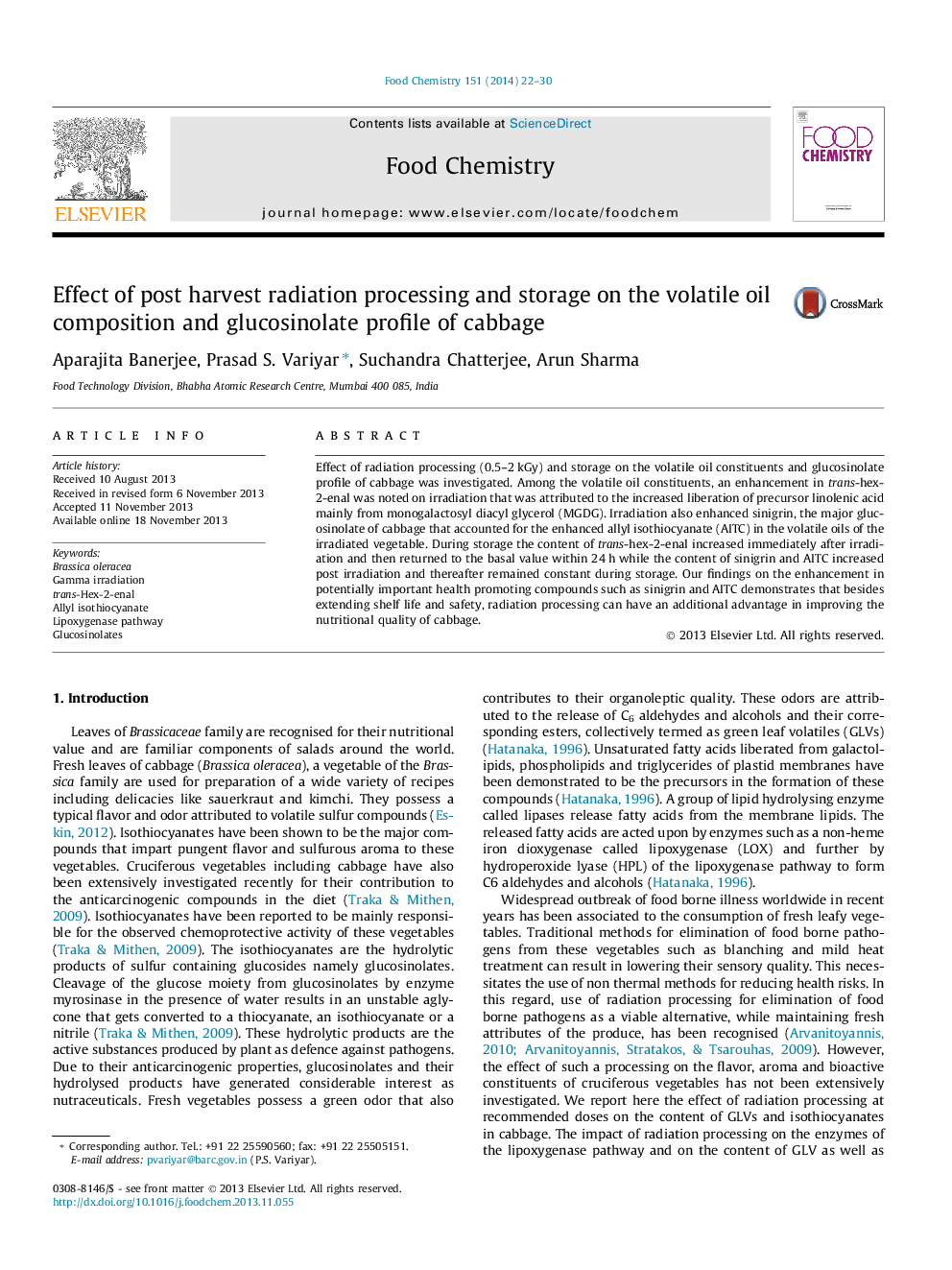| Article ID | Journal | Published Year | Pages | File Type |
|---|---|---|---|---|
| 1185199 | Food Chemistry | 2014 | 9 Pages |
•Lipid radiolysis by gamma irradiation caused an enhancement in free fatty acid pool.•Released linolenic acid was acted upon by enzymes of LOX pathway enhancing 2-hexenal content.•An increase in sinigrin, the major glucosinolate of cabbage was noted on irradiation.•The increase in sinigrin accounted for an enhancement in allylisothiocyanate content.•Radiation processing enhanced nutraceutical and flavor quality of cabbage.
Effect of radiation processing (0.5–2 kGy) and storage on the volatile oil constituents and glucosinolate profile of cabbage was investigated. Among the volatile oil constituents, an enhancement in trans-hex-2-enal was noted on irradiation that was attributed to the increased liberation of precursor linolenic acid mainly from monogalactosyl diacyl glycerol (MGDG). Irradiation also enhanced sinigrin, the major glucosinolate of cabbage that accounted for the enhanced allyl isothiocyanate (AITC) in the volatile oils of the irradiated vegetable. During storage the content of trans-hex-2-enal increased immediately after irradiation and then returned to the basal value within 24 h while the content of sinigrin and AITC increased post irradiation and thereafter remained constant during storage. Our findings on the enhancement in potentially important health promoting compounds such as sinigrin and AITC demonstrates that besides extending shelf life and safety, radiation processing can have an additional advantage in improving the nutritional quality of cabbage.
